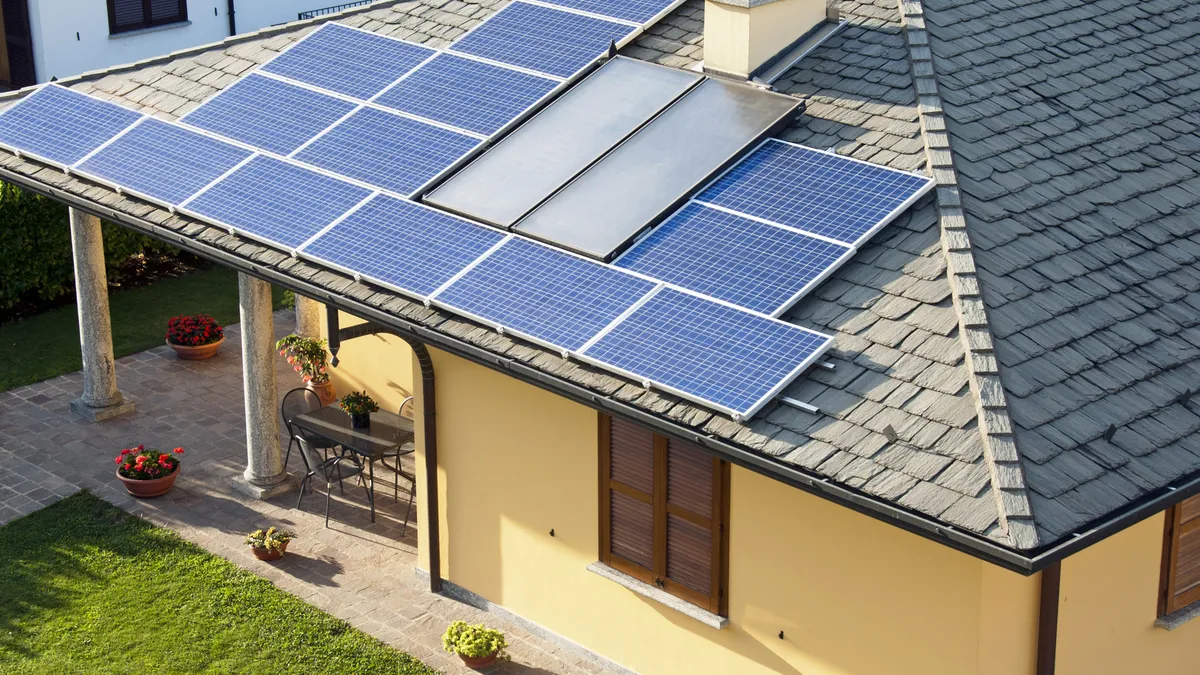Dive Brief:
- The California Energy Commission approved the 2019 Building Energy Code on Wednesday, requiring renewable energy access for all new residential homes in the state starting in 2020.
- The code includes incentives for energy storage while mandating that the construction of new homes include advanced energy efficiency measures and rooftop solar. The mandate could require between 68 and 241 MW of annual distributed solar buildout, according to ClearView Energy Partners' research using 2017 data.
- All told, the new code is meant to save Californians a net $1.7 billion on energy bills, while advancing the state's efforts to build-out renewable energy, the commission said.
Dive Insight:
This historic revision of building energy codes ensures a large investment in residential rooftop solar and energy efficiency as California pursues its mandate of getting 50% of its energy from renewables by 2030.
"The combination of rooftop solar and the option to add energy storage systems as an efficiency compliance credit provides builders with an attractive, cost-effective option to fully electrify homes," Abigail Ross Hopper, president and CEO of the Solar Energy Industries Association, said in a statement. SEIA worked with the commission for more than two years to develop the new standards.
Already, the news has been a boon for solar developers such as Sunrun, Vivint Solar and First Solar. Bloomberg reported a surge in the stock of solar companies after the commission's decision.
In a prior boost for solar, the California Public Utilities Commission (CPUC) had approved its net metering 2.0 rate design in January 2016, to the chagrin of the state's investor-owned utilities. Utilities asserted that the net metered distributed generation from California's electricity consumers shifted the costs for the system's maintenance and infrastructure onto non-distributed generation owners.
Research from analysts at ClearView singled out Wednesday's distributed solar mandate as a possible opening for utilities to argue that California regulators should reconsider the net metering reform proposal.
Utilities that objected to the new rate-design "could contend that the introduction of mandated distributed solar sufficiently alters the policy landscape to warrant further review of the compensation levels paid to excess generation," ClearView said in their report, published ahead of the energy commission's decision.
The updated codes also include new incentives for energy storage: integrating storage in new homes would lower the required size for solar systems. The state has been a leader in incentivizing energy storage. In January, the CPUC moved to allow multiple revenue streams for energy storage, such as spinning reserve services and frequency regulation.
California's Building Standards Commission must also approve the new standards, Associated Press reported.















